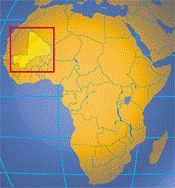International Sorghum and Millet Collaborative Research Support Program (INTSORMIL CRSP)
Date of this Version
11-23-2011
Document Type
Article
Citation
USAID Mail Research Brief (November 23, 2011)
Abstract
Most of the sorghum in Mali is grown under rainfed conditions on the plains, but some is grown in the banks of rivers and lakes when the water level recedes (sorgho de décrue or décrue sorghum). This is one of the oldest and most fascinating methods of cultivating sorghum. The décrue production system is particularly practiced around water bodies in the Mopti, Gao, Tombouctou and Kayes regions. This production system plays an important role in the food security of these regions. As the floodwater recedes, seeds are sown in muddy soil and the crop is grown on the stored soil moisture. Depending upon the season, water from lakes and rivers spreads and recedes slowly. The decrue system is vulnerable to changes in the amount of water and the dry period following the recession of water. Thus, there is a large variability in amount and depth of soil water. This presents a unique challenge for selection of appropriate sorghum genotypes that can extract water from the deep profile and use soil water more efficiently. Not all genotypes are productive in decrue systems. Little is known about genotypic performance under these production systems. For improving yield of décrue sorghum, it is important to identify traits that contribute to greater yield stability in the extended dry season.
Thus, a research project funded through the USAID Mali Mission was initiated with a team of researchers led by Mr. Abdoul Wahab Toure from IER and Dr. Vara Prasad from Kansas State University (KSU) to collect and test the performance of local and improved sorghum genotypes under décrue production systems in northern Mali. It was observed that certain local genotypes (e.g. Saba soto and Saba tienda) had more stable yield in both good and dry years. The improved genotype Niatichama performed on par with local genotypes in a good year, but failed in a dry year. This was a very intriguing observation so we continued research to identify the reasons for this response.


